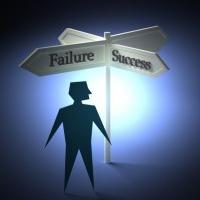Want to Become Agile? Get Ready to Make Countless Mistakes

Look, not every single thing you’re going to try in software is going to be perfect. In fact, even if you run weekly sprints, poll your desired audience, and do months and months of research in order to shape the “perfect product,” there’s still a strong likelihood that you’ll run into multiple failures along the way.
And while we rarely seek out failure, it’s important to understand that miscalculations aren’t project-ending issues meant to be avoided like the plague. In order for the iterative nature of agile to work, you need to be prepared to fail—and fail often.
Jessie Shternshus, the owner and founder of The Improv Effect and a public speaker, compares the agile mindset to the one that people involved in improv often have. Since these types of performers work without prepared material and hope to build something compelling based on the heat of the moment, they need to become extremely comfortable with missing a few marks.
That’s exactly how agile practitioners should think, as long as they understand that from these mistakes often come the most solid ideas.
“I think first the environment needs to be set up so that part of the agile mindset is to be okay with making mistakes, with exploring those, learning from them, and gaining new perspective,” Shternshus explains. “I think the more that people see there's a new perspective, or a new idea that comes out of the mistakes, the more they're willing to sort of put themselves out there and not just do status quo, because they're afraid that somebody's gonna get mad if they do something wrong.”
What that does require are team members that have a deep trust in one another. If you’re going to take a shot and risk failing or looking silly, you can’t be worried that those around you are going to turn their backs on you. You need teams to work in harmony and move as a unit—even as things aren’t working.
And why does agile allow you to fail so many times along the way? By testing early and often, you can iron things out before they become major issues too deeply baked into the software to remove.
“You're doing things in small chunks, and constantly testing things so that when you make mistakes, it's a lot more low-risk if you will,” she continues. “So it's not like waterfall, where you were working on something for five years, and a billion dollars later, you're like, ‘Hey guys, do you love this product?’ And it sucks. And then you also lost a billion dollars and all your customers.”
It’s not easy, but to find success with agile, you need to become comfortable not only taking risks, but watching those risks lead to real failure. Not every idea is going to be a winner, but more often than not, those failures lead to an even greater success.

